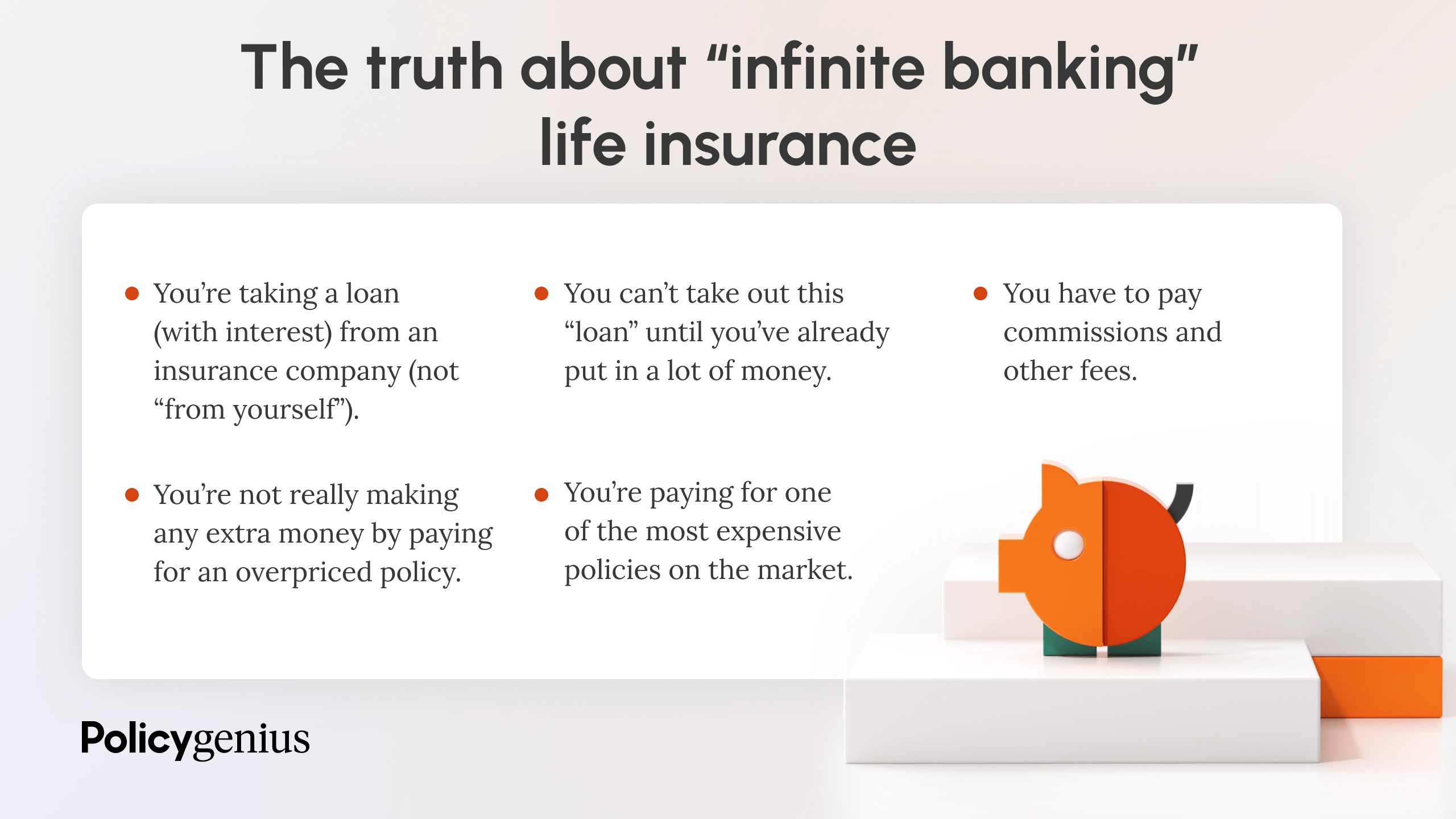All Categories
Featured
Table of Contents
Okay, to be reasonable you're actually "financial with an insurance business" instead than "financial on yourself", however that idea is not as simple to offer. It's a little bit like the concept of purchasing a residence with cash money, then borrowing against the home and putting the money to function in an additional investment.
Some individuals like to talk about the "velocity of money", which basically implies the exact same thing. That does not mean there is nothing rewarding to this idea once you get past the marketing.
The whole life insurance industry is plagued by extremely expensive insurance coverage, substantial payments, questionable sales methods, low rates of return, and improperly educated customers and salespeople. If you want to "Financial institution on Yourself", you're going to have to wade into this sector and actually purchase whole life insurance coverage. There is no alternative.
The assurances inherent in this product are crucial to its feature. You can borrow versus the majority of sorts of money value life insurance policy, yet you should not "financial institution" with them. As you acquire a whole life insurance policy plan to "bank" with, bear in mind that this is an entirely different area of your economic strategy from the life insurance policy area.
As you will certainly see below, your "Infinite Financial" policy actually is not going to reliably give this vital monetary function. One more trouble with the reality that IB/BOY/LEAP counts, at its core, on an entire life plan is that it can make purchasing a plan problematic for many of those interested in doing so.
Infinite Financial
Harmful leisure activities such as diving, rock climbing, sky diving, or flying additionally do not mix well with life insurance policy items. The IB/BOY/LEAP advocates (salesmen?) have a workaround for youbuy the policy on someone else! That may exercise great, since the factor of the policy is not the fatality advantage, yet bear in mind that acquiring a plan on minor kids is extra costly than it should be because they are generally underwritten at a "typical" price instead than a favored one.

Many plans are structured to do one of 2 points. The compensation on a whole life insurance coverage policy is 50-110% of the very first year's premium. Occasionally policies are structured to maximize the death benefit for the premiums paid.
The rate of return on the policy is really crucial. One of the best means to make the most of that variable is to get as much cash as possible right into the policy.
The very best means to improve the price of return of a plan is to have a relatively small "base policy", and then put more cash money right into it with "paid-up additions". As opposed to asking "Exactly how little can I place in to get a specific death advantage?" the inquiry ends up being "Just how a lot can I legally took into the policy?" With even more cash money in the plan, there is even more cash value left after the prices of the fatality benefit are paid.
An additional benefit of a paid-up enhancement over a normal premium is that the compensation price is reduced (like 3-4% instead of 50-110%) on paid-up enhancements than the base policy. The less you pay in commission, the greater your price of return. The price of return on your cash value is still mosting likely to be unfavorable for some time, like all money worth insurance policies.
It is not interest-free. As a matter of fact, it may set you back as high as 8%. A lot of insurer only offer "direct recognition" lendings. With a direct recognition car loan, if you borrow out $50K, the reward rate related to the cash money value annually only relates to the $150K left in the policy.
Infinite Banking Concept Uk
With a non-direct acknowledgment loan, the firm still pays the exact same dividend, whether you have "obtained the cash out" (technically versus) the plan or not. Crazy, right? Why would certainly they do that? Who recognizes? However they do. Often this attribute is matched with some less beneficial facet of the plan, such as a reduced dividend price than you may get from a policy with straight recognition fundings (concept bank).
The companies do not have a resource of magic complimentary cash, so what they give up one area in the policy need to be extracted from one more location. However if it is extracted from a feature you care much less about and take into a function you care extra around, that is a good idea for you.
There is another crucial attribute, generally called "wash loans". While it is terrific to still have actually dividends paid on money you have secured of the plan, you still have to pay passion on that particular loan. If the dividend price is 4% and the car loan is billing 8%, you're not exactly appearing ahead.
With a clean loan, your lending rate of interest is the same as the returns rate on the plan. While you are paying 5% passion on the car loan, that passion is completely offset by the 5% dividend on the financing. In that respect, it acts just like you took out the money from a bank account.

5%-5% = 0%-0%. Without all 3 of these aspects, this policy just is not going to work extremely well for IB/BOY/LEAP. Nearly all of them stand to profit from you purchasing right into this idea.
There are many insurance coverage representatives speaking regarding IB/BOY/LEAP as a feature of entire life that are not really marketing policies with the required features to do it! The issue is that those that recognize the principle best have an enormous problem of passion and generally pump up the advantages of the principle (and the underlying plan).
Infinite Banking Nelson Nash
You ought to contrast borrowing versus your plan to withdrawing cash from your interest-bearing account. Return to the start. When you have absolutely nothing. No cash in the financial institution. No cash in investments. No money in cash worth life insurance policy. You are faced with an option. You can put the cash in the bank, you can spend it, or you can get an IB/BOY/LEAP policy.
It expands as the account pays interest. You pay tax obligations on the interest each year. When it comes time to acquire the watercraft, you withdraw the cash and get the watercraft. You can save some more money and put it back in the banking account to start to make rate of interest once again.
It grows for many years with funding gains, dividends, rents, and so on. A few of that revenue is tired as you go along. When it comes time to purchase the watercraft, you market the investment and pay tax obligations on your long-term capital gains. You can save some even more money and purchase some even more investments.
The money value not used to spend for insurance policy and payments grows over the years at the returns rate without tax obligation drag. It starts with adverse returns, yet with any luck by year 5 approximately has actually damaged even and is growing at the reward rate. When you go to purchase the watercraft, you obtain versus the plan tax-free.
How Do I Become My Own Bank
As you pay it back, the money you paid back begins expanding once more at the dividend price. Those all job pretty likewise and you can compare the after-tax rates of return.
They run your credit history and provide you a finance. You pay passion on the borrowed money to the financial institution until the finance is repaid. When it is paid off, you have a nearly worthless boat and no money. As you can see, that is not anything like the first 3 choices.
Latest Posts
Infinite Bank Concept
Paradigm Life Infinite Banking
Nelson Nash Reviews